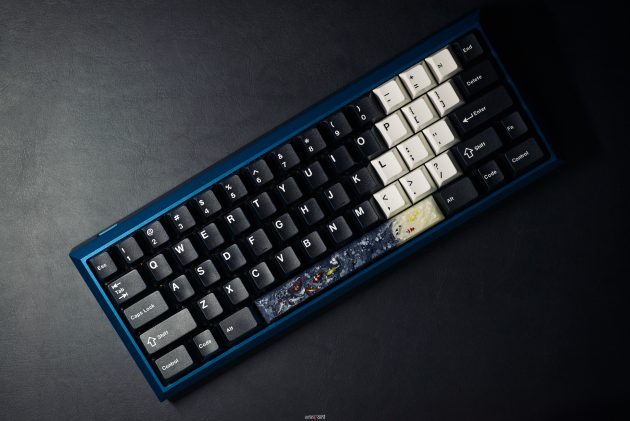Keyboard Wonderland – ENGLISH Version – Part I

Layouts part III – QWERTY VS The World
QWERTY is a well-known layout based on the layout created for a Sholes and Glidden typewriter and sold to Remington and Sons in 1873. Its popularity spiked with the success of the Remington No.2 typewriter (1878) and the rest is history. Its name origin is in the first 6 keys to the right of the Tab key. There are a lot of variants of this layout depending on the country where the keyboards originates from and I personally like to consider QWERTZ, AZERTY, and similar others as variants of QWERTY as there are only a few keys moved around for better typing ergonomics depending on the language one is typing in.
It is wise to observe that these layouts can be changed by the Operating System on-the-fly, so if you have a keyboard with a phyisical QWERTY layout and you select French as a keyboard language you will notice that when you press Q then on the screen A will appear.
This can be an advantage if you are an adept touch typist and you want to try out a COLEMAK or Dvorak layout – this is only one step away and you can do this by using any keyboard available.
Regarding Dvorak, what is it exactly? Well, in 1936 August Dvorak and his brother in law William Dealey created a layout that aimed to be faster and with better ergonomics than QWERTY. They unsurprisingly named it the Dvorak layout. Time passes and resolves everything so the domination of QWERTY continued undisturbed because the perceived advantages of Dvorak were not enough to demolish a 60 year old behemoth.
Of course there are Dvorak enjoyers out there and that is all right. The fundamental issue of this layout is that it may prove hard to learn because the keycaps in general have sculpted profiles (an exception being DSA, we will circle back to that later) thus a physical Dvorak keyboard layout with Cherry or OEM profile keycaps would look like a freshly plowed field.
In the same unenviable situation we find the COLEMAK layout, invented by Shai Coleman. This is a layout which leans a lot towards the English language as its key arrangement is designed to optimise the ergonomics of typing in this particular language. This is achieved by placing the most frequent letters used in English on the home row (the home row is the row containing ASDF and JKL; – it is where you should be placing your hands whilst typing – with the left hand index on F and the right hand index on J).
COLEMAK was designed by modifying the QWERTY layout by moving around 17 keys but keeping the QWERTY positions intact for most non-alphabetical characters and key combinations. Thus it was theorised that it will be easier to learn than Dvorak for people already using QWERTY. One interesting change from QWERTY that COLEMAK introduced was eliminating the Caps Lock key and replacing it with a second Backspace.
The major issue of both COLEMAK and Dvorak is the learning curve. Another one is assembling a keyboard that has such a physical layout – a solution is using keycaps with an uniform profile like DSA or blank sculpted keycaps. Another one is hunting for the fabled COLEVRAK extensions for the GMK sets that have them.

Comentarii










Kinesis copied Maltron.
Ian, I’m sorry, but if you point far enough backwards in time a germ gets blamed for splitting in two. Maltron had the ideas but the execution has been thoroughly terrible throughout time and they never caught on. At the same time I didn’t want to touch upon too much history because the article is complex enough as it is.
That being said, Kinesis is one of the first actually ergonomic keyboards that is actually good and was available and came up in searches online back around 2005ish, so I went with it as the contemporary origins. Maltron will always be remembered for this abomination which sold for $400 – https://youtu.be/fkGpFeUQ49Y
Pingback: PFU/Fujitsu Happy Hacking Keyboard Professional Hybrid Type-S ENGLISH version – next lab501